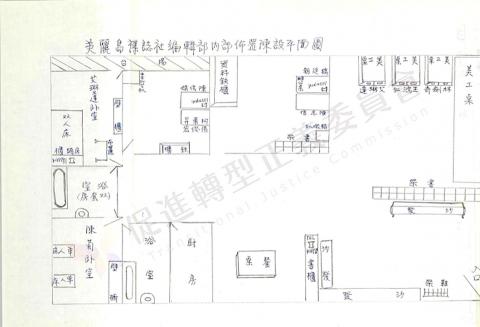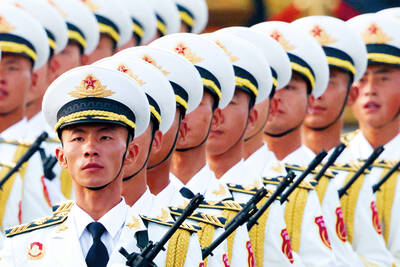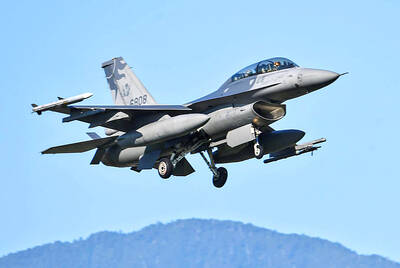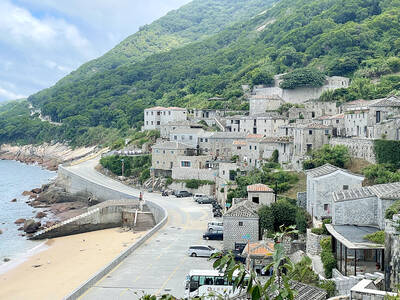Recently declassified National Security Bureau files showed that the former Chinese Nationalist Party (KMT) regime was keeping close tabs on Formosa Magazine and learned the entire content of its first issue before it went to print.
Formosa Magazine was at the center of 1979’s Kaohsiung Incident, also known as the Formosa Incident.
The magazine organized a pro-democracy demonstration on Dec. 10, 1979. It was intended to commemorate Human Rights Day.

Photo provided by the Transitional Justice Commission
The event turned violent when members of the crowd unknown to the organizers — and widely believed to have been provocateurs — began attacking police. The KMT authorities used the Incident as an excuse to arrest virtually all well-known opposition leaders.
Tuesday is the 40th anniversary of the Kaohsiung Incident.
The commission on Friday said that it has been in contact with the bureau since the Political Archives Act (政治檔案條例) was passed, in the hope of obtaining declassified files about the Incident.
The commission said that it worked closely with several agencies to facilitate the declassification and transfer of data about state-perpetrated injustice during the White Terror era.
At first it was not easy, as all files on the Kaohsiung Incident had been permanently classified, the commission said.
Thanks to assistance from the Presidential Office and National Security Council, the classified documents eventually saw the light of day, it said.
The data detailed how the then-KMT government surveilled Formosa Magazine from when it was founded to the publication of its first issue, the commission said, adding that the magazine was being so closely monitored that the KMT knew the entire content of its first issue before it went to print, including the layout of its inside pages.
In the few months of the short-lived magazine’s life, intelligence agencies had embedded informants in the magazine’s office to monitor every move, the commission said.
The declassified data also offered insight into the KMT’s decisionmaking process after the Kaohsiung Incident, including its choice to round up the activists and quash dissents, all of which was missing from previously released information, the commission said.
The information would shed new light on the Incident once it is made available to the public, it added.
The National Archives Administration in 2002 began collecting data on the Incident, and last year began its sixth wave of data collection, sourcing data from the National Security Bureau, the National Police Agency and the Investigation Bureau, the commission said.
A substantial portion of the most recent data showed that many non-governmental entities had been acting on the orders of intelligence agencies and feeding them information about the magazine, it said.

The Chinese military has built landing bridge ships designed to expand its amphibious options for a potential assault on Taiwan, but their combat effectiveness is limited due to their high vulnerability, a defense expert said in an analysis published on Monday. Shen Ming-shih (沈明室), a research fellow at the Institute for National Defense and Security Research, said that the deployment of such vessels as part of the Chinese People’s Liberation Army (PLA) Navy’s East Sea Fleet signals a strong focus on Taiwan. However, the ships are highly vulnerable to precision strikes, which means they could be destroyed before they achieve their intended

The first two F-16V Bock 70 jets purchased from the US are expected to arrive in Taiwan around Double Ten National Day, which is on Oct. 10, a military source said yesterday. Of the 66 F-16V Block 70 jets purchased from the US, the first completed production in March, the source said, adding that since then three jets have been produced per month. Although there were reports of engine defects, the issue has been resolved, they said. After the jets arrive in Taiwan, they must first pass testing by the air force before they would officially become Taiwan’s property, they said. The air force

GLOBAL: Although Matsu has limited capacity for large numbers of domestic tourists, it would be a great high-end destination for international travelers, an official said Lienchiang County’s (Matsu) unique landscape and Cold War history give it great potential to be marketed as a destination for international travelers, Tourism Administration Director General Chen Yu-hsiu (陳玉秀) said at the weekend. Tourism officials traveled to the outlying island for the Matsu Biennial, an art festival that started on Friday to celebrate Matsu’s culture, history and landscape. Travelers to Matsu, which lies about 190km northwest of Taipei, must fly or take the state-run New Taima passenger ship. However, flights are often canceled during fog season from April to June. Chen spoke about her vision to promote Matsu as a tourist attraction in

PAWSITIVE IMPACT: A shop owner said that while he adopted cats to take care of rodents, they have also attracted younger visitors who also buy his dried goods In Taipei’s Dadaocheng (大稻埕), cats lounging in shops along Dihua Street do more than nap amid the scent of dried seafood. Many have become beloved fixtures who double as photography models, attracting visitors and helping boost sales in one of the capital’s most historic quarters. A recent photo contest featuring more than a dozen shop cats drew more than 2,200 submissions, turning everyday cat-spotting into a friendly competition that attracted amateur and professional photographers. “It’s rare to see cats standing, so when it suddenly did, it felt like a lucky cat,” said Sabrina Hsu (徐淳蔚), who won the NT$10,000 top prize in